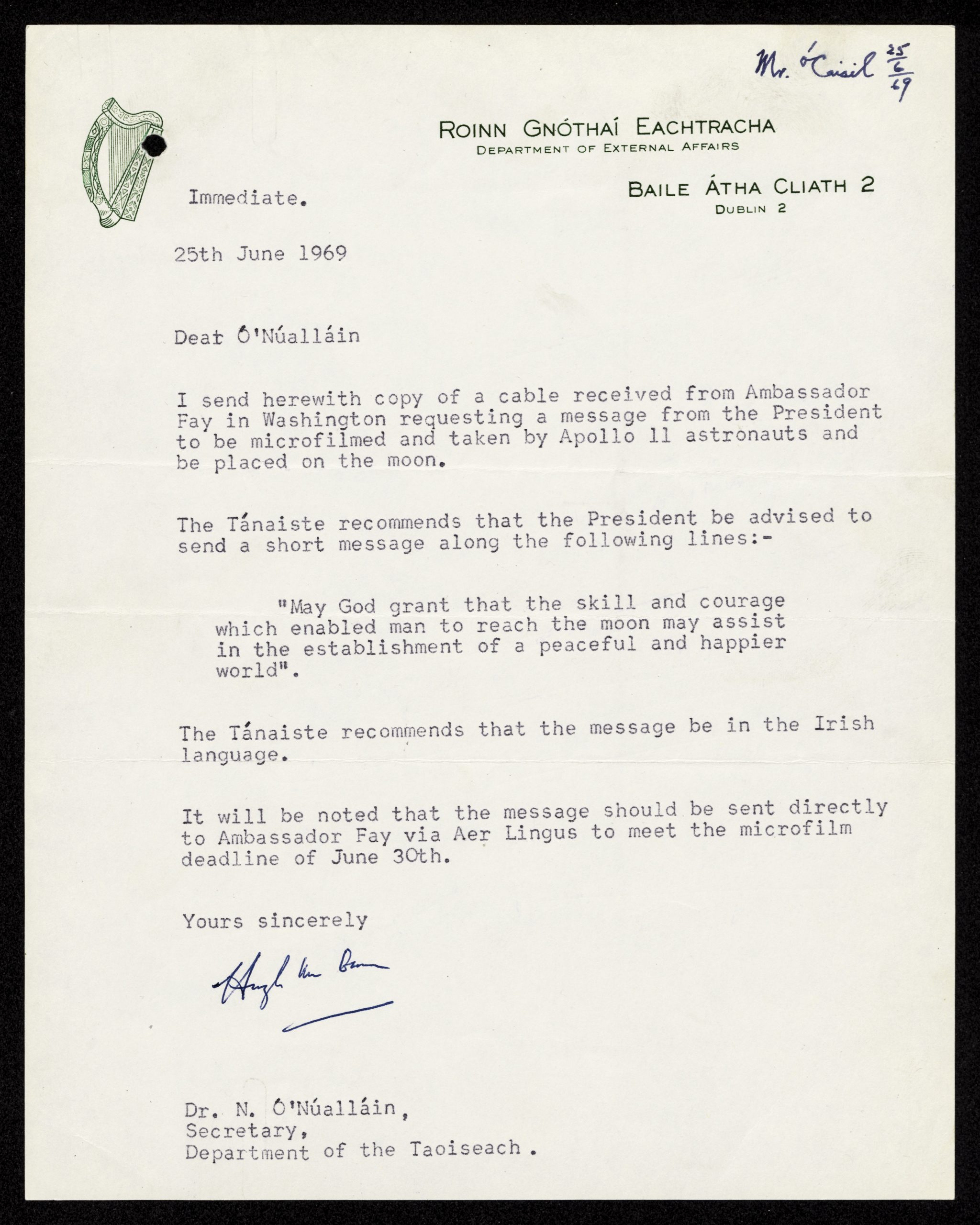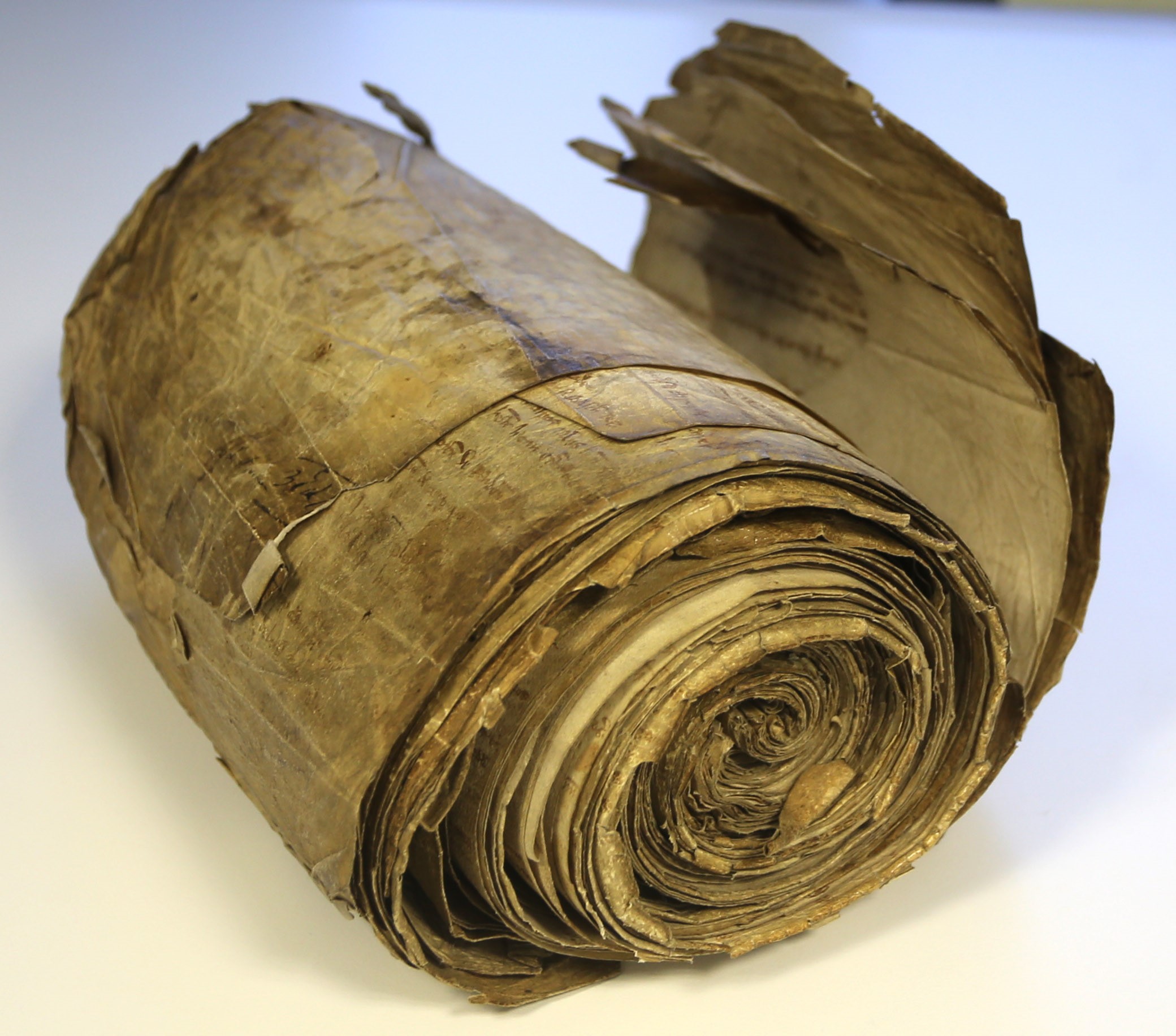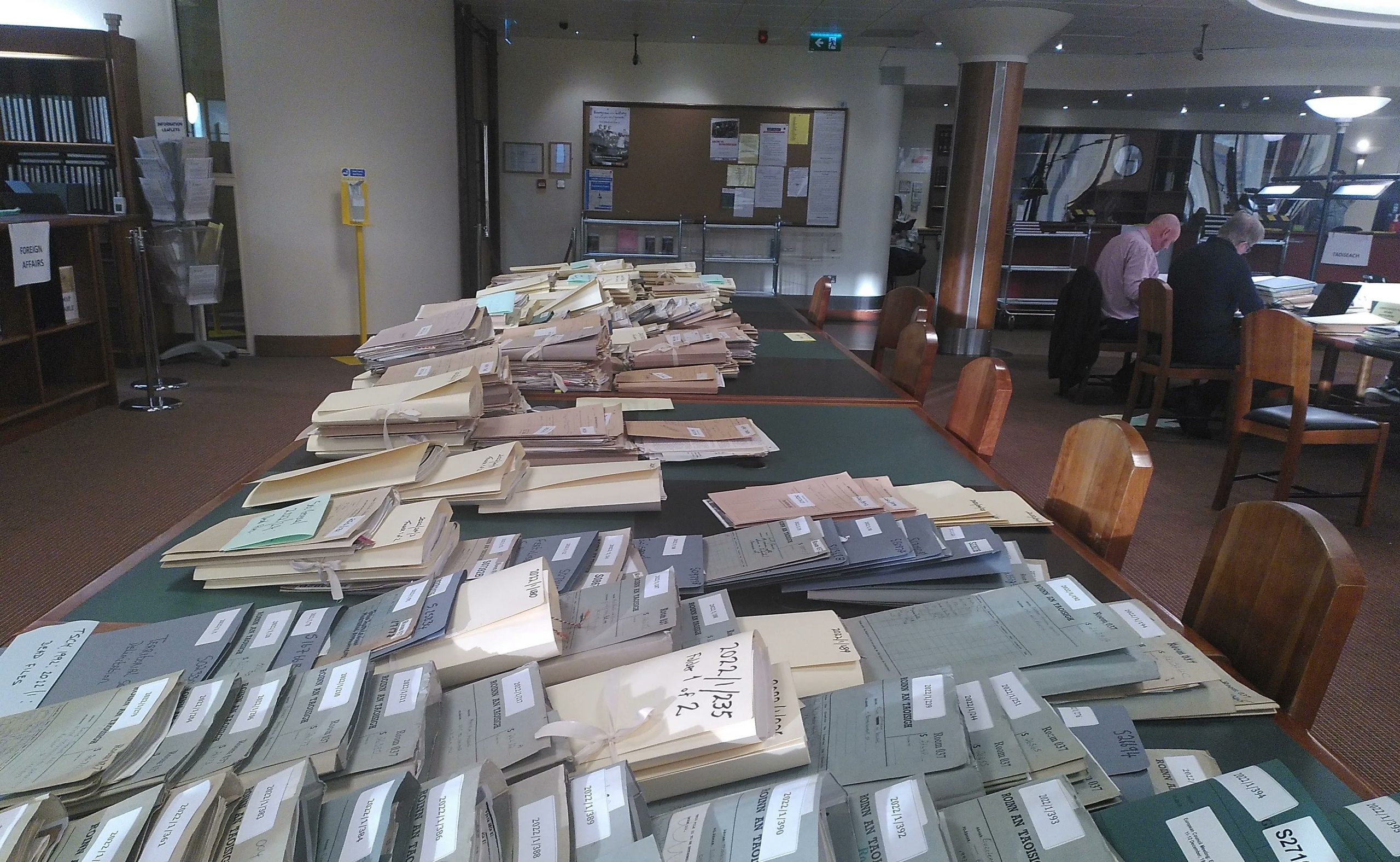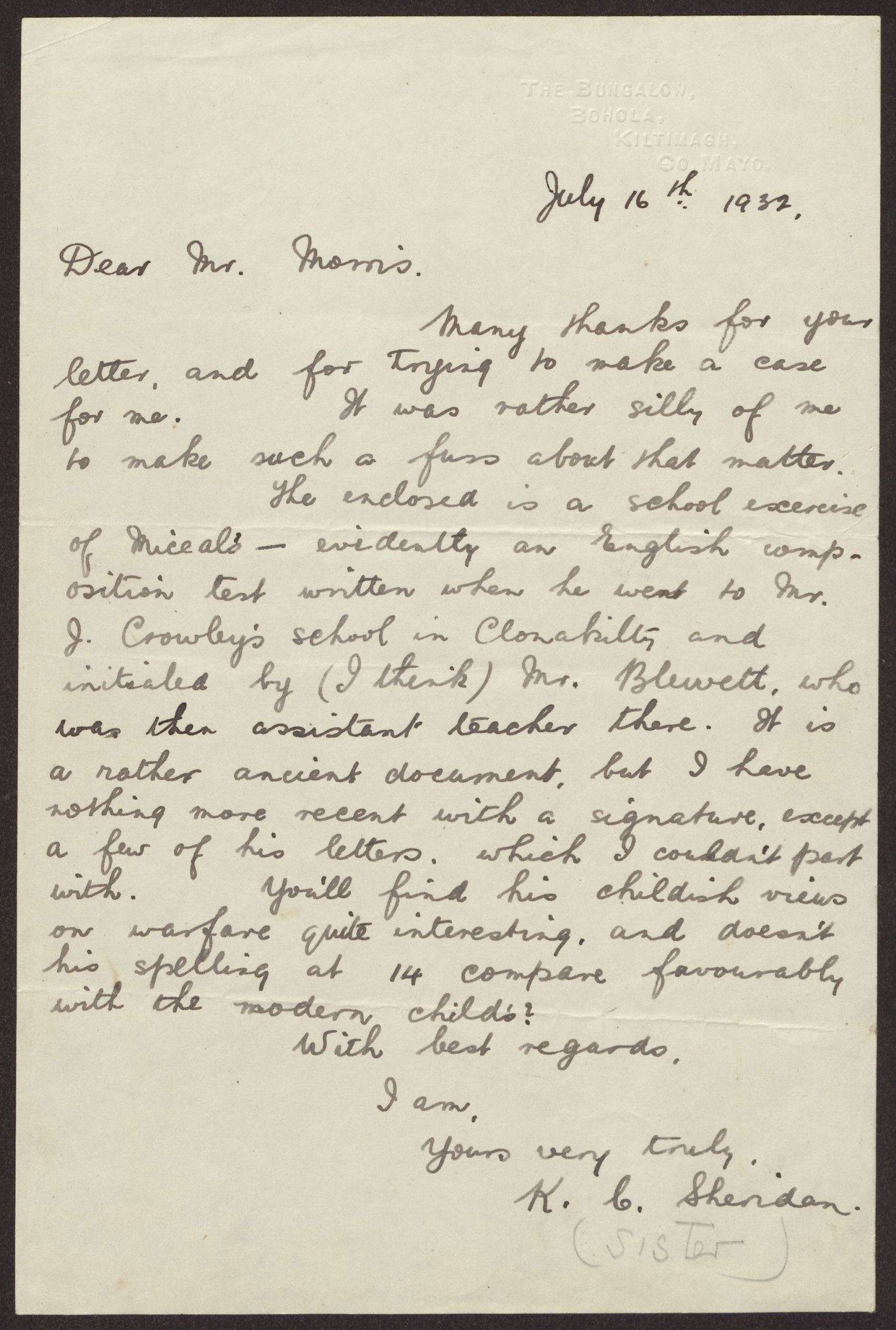File in Focus: An Irish Message on the Moon

The Apollo 11 space mission was the culmination of United States President John F. Kennedy’s goal, set in 1961, to perform a crewed lunar landing and return to Earth.
A version of this short message from President Éamon de Valera, contained in the letter across, was taken by Apollo 11 to the moon (ref. NAI, TSCH 2000/6/481). The letter was sent from the Secretary of the Department of External Affairs Hugh McCann to the Secretary of the Department of the Taoiseach, Nicolás Ó Nualláin (Nicholas Nolan). The text that de Valera ultimately sent to the moon, which was altered slightly, is as follows:
Go ndeonaí Dia go dtabharfaidh an mheabhair agus an misneach a chuir ar chumas an duine cos a leagan ar an ngealach go mbeidh ar a chumas chomh maith síocháin agus sonas a chur in áirthe ar an talamh seo agus teacht slán ó chontúirt a léirscriosta féin
May God grant that the skill and courage which have enabled man to alight upon the moon will enable him, also, to secure peace and happiness upon the earth and avoid the danger of self-destruction
The request to send a message to the moon came from the National Aeronautics and Space Administration (NASA) and was communicated to Dublin by the Irish Ambassador to the United States, William Fay. In a cable to the Department Fay said how ‘President de Valera, as one of Earth’s most distinguished living citizens should send (a) message’. Fay also informed them that, along with some other diplomatic colleagues, he had been invited to view the ‘Blast Off’ from Cape Kennedy (Canaveral), Florida, on 16 July 1969. He was one of a select few invited to witness the take off in person, while 650 million people are estimated to have watched the lunar landing on television four days later.
The process involved in getting the Ireland’s message to the moon, along with those of seventy-two other countries, provides an insight into the history of technology in mid-twentieth century. NASA explained to Fay how the message was processed for preservation on the surface of the moon via a technique that was developed ‘for etching microminiaturized electronic circuits utilized in NASA’s space missions. With this process the messages of goodwill were etched on a silicon disc about 3cm in diameter.’ The message appears on the disc exactly as it was sent but reduced two hundred times to a size smaller than the head of a pin. It can be clearly seen and read under a high-powered microscope.
The reason for seeking these messages from countries around the world was in part to strengthen American diplomacy, with the Apollo 11 mission considered a ‘soft-power victory’ for the United States during the Cold War. The three members of the Apollo 11 crew, Neil Armstrong, Edwin ‘Buzz’ Aldrin and Michael Collins, went on another mission after they came back down to Earth, a twenty-four-country goodwill tour of the world promoting American cultural interests. Their endeavours have been linked to what has since been coined ‘Space Diplomacy’.
On the occasion of the safe return of the astronauts Taoiseach Jack Lynch sent another message, this time to President Richard Nixon. He offered the astronauts and NASA ground control staff at Houston, Texas, ‘the sincerest congratulations of the Government and people of Ireland’ and he paid ‘a special tribute to the wives and families of these brave pioneers.’
The silicon disc containing the goodwill messages along with other less lofty items like bags of human waste, remain where the astronauts left them in 1969, intergalactic artefacts, evidence of humankind’s first flight to the moon.
Kate O’Malley is Assistant Editor with the Documents on Irish Foreign Policy (DIFP) series. DIFP publishes archival material relating to Ireland’s foreign relations since 1919. It is a partnership between the Royal Irish Academy, the National Archives and the Department of Foreign Affairs: www.difp.ie. Documents on Irish Foreign Policy Vol. XIII: 1965-1969 is published by the Royal Irish Academy.
This letter is contained in DIFP XIII as Document No. 542.


